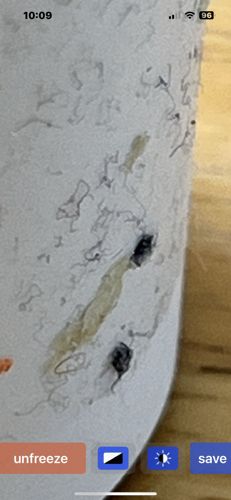Household Casebearer Moth (larva)
Scientific Name: Phereoeca uterella
Order & Family: Lepidoptera (moths and butterflies), Tineidae (clothes moths and their relatives)
Size: Larvae (in case): 10-15 mm (0.4-0.6 inches) long; Adults: 6-13 mm (0.2-0.5 inches) wingspan

Natural Habitat
Indoors, commonly found in closets, attics, storage areas, and undisturbed corners of rooms, especially where natural fibers or insect debris accumulate. They prefer humid conditions and can be found outdoors in sheltered, dark places like under eaves or in bird nests.
Diet & Feeding
The larvae feed on materials containing keratin, such as wool, hair, felt, fur, and feathers, as well as spiderwebs, insect remains, and lint. They are known to damage wool carpets, clothes, and upholstered furniture. They may also feed on dried plant material.
Behavior Patterns
Larvae spin silken cases that they carry with them. These cases are often camouflaged with surrounding debris such as lint, dust, or small fibers. The larvae are slow-moving and prefer dark, undisturbed areas. Adults are small, rarely seen flying due to their nocturnal behavior and weak flight. They are attracted to light.
Risks & Benefits
Risks: Can cause damage to natural fibers in homes, including clothing, carpets, and upholstery. Their presence can indicate a moisture problem. Benefits: Outdoors, they play a minor role in decomposition by consuming organic detritus and insect remains. They are not known to bite or carry diseases to humans or pets.
Identified on: 8/27/2025